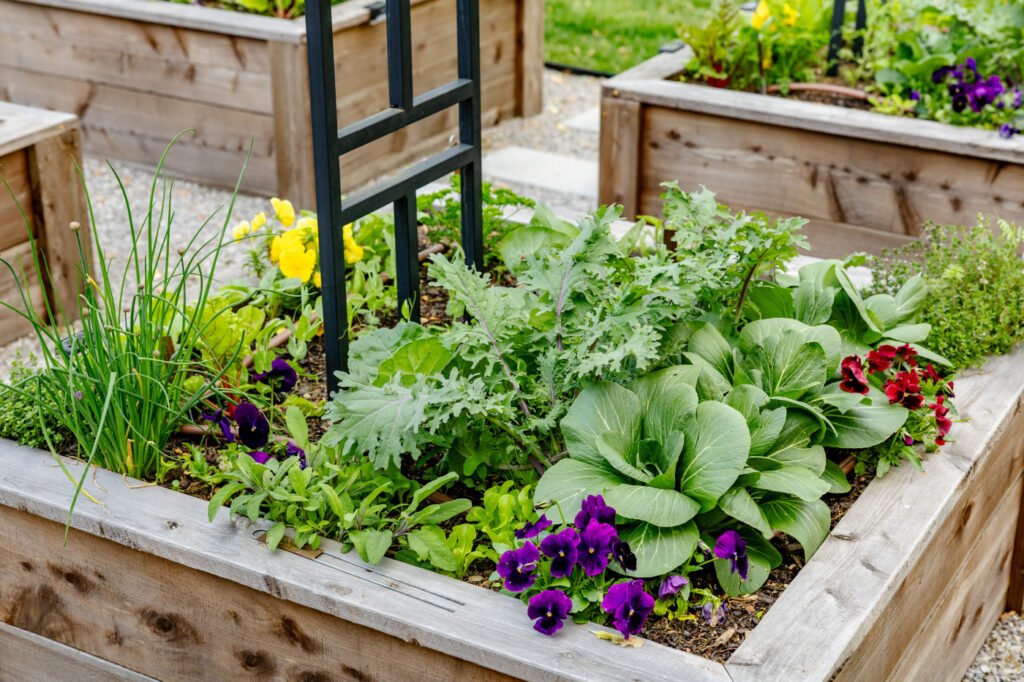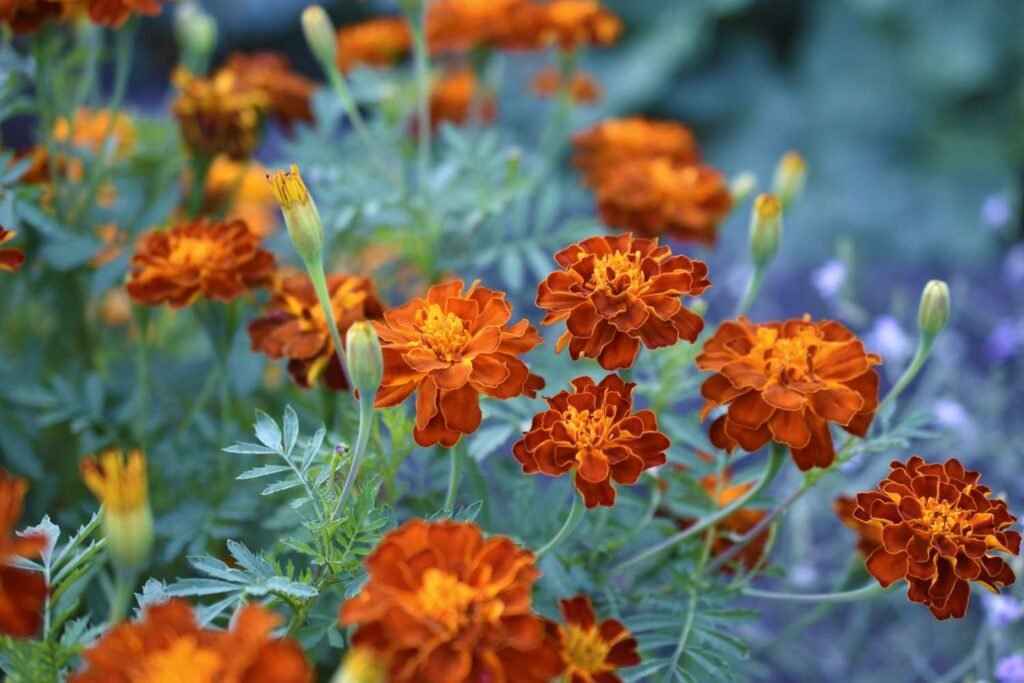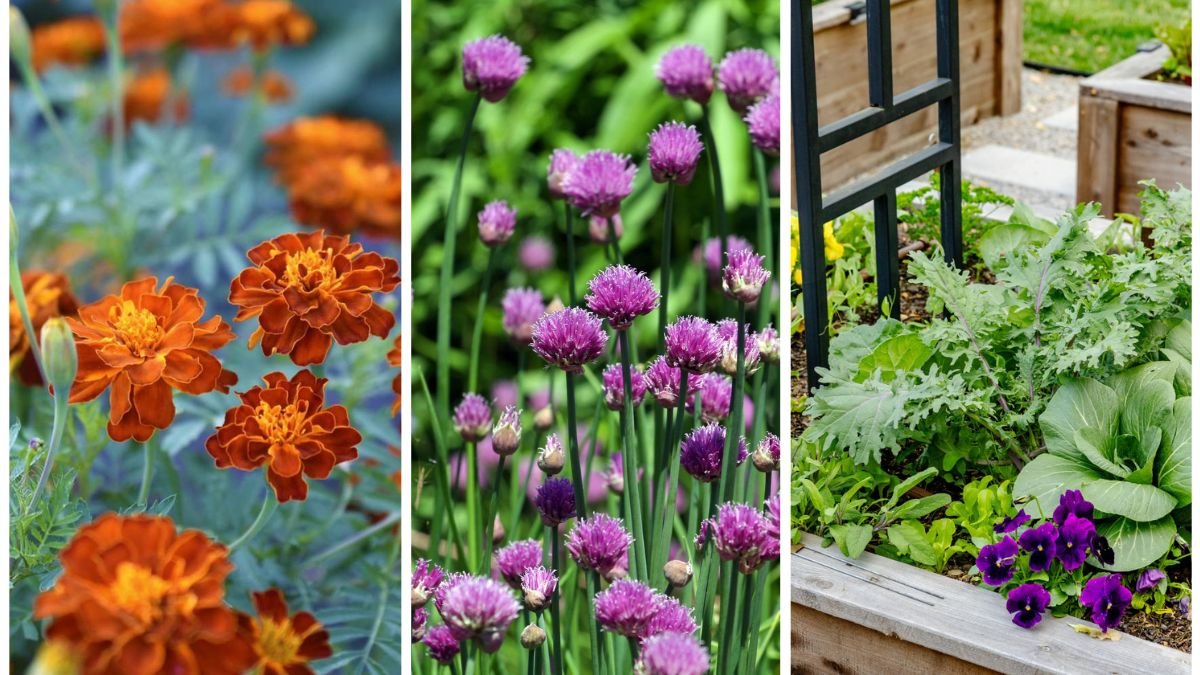Every gardener knows the frustration of seeing their vegetables attacked by pests. Aphids, beetles, caterpillars, and other unwanted visitors can quickly turn a thriving vegetable patch into a struggling mess. While pesticides may seem like the easiest solution, they often kill beneficial insects along with harmful ones, disrupt soil health, and leave behind chemical residues on your food.
The good news? Nature provides its own pest control system. Certain plants naturally repel insects through their scent, chemical compounds, or ability to attract beneficial predators. By incorporating these pest-repelling plants into your vegetable garden, you can protect your crops the eco-friendly way while also enhancing your garden’s diversity and beauty.
In this article, we’ll explore five powerful pest-repelling plants you should grow near your veggies, how they work, and the best ways to use them.
1. Marigolds – The Ultimate Pest Deterrent

Why They Work:
Marigolds are among the most popular companion plants for vegetables because of their pest-repelling abilities. They release a strong scent that deters nematodes, whiteflies, and aphids. The French marigold (Tagetes patula), in particular, produces compounds in its roots that suppress harmful nematodes in the soil.
Benefits in the Garden:
- Repels aphids, mosquitoes, nematodes, and even tomato hornworms.
- Attracts pollinators like bees and beneficial insects like hoverflies and ladybugs.
- Provides bright, cheerful blooms that enhance garden aesthetics.
Best Vegetables to Pair With:
- Tomatoes (marigolds repel tomato hornworms).
- Peppers and eggplants (help deter aphids).
- Beans and squash (protect from nematodes).
Planting Tips:
- Plant marigolds as a border around your vegetable beds.
- Deadhead regularly to encourage more blooms and keep pests away.
- Choose French marigolds for nematode control in particular.
2. Basil – The Fragrant Protector

Why It Works:
Basil is not just a tasty culinary herb; it’s also a natural insect repellent. Its strong aroma deters mosquitoes, whiteflies, and tomato hornworms. Some gardeners believe basil even improves the flavor and growth of tomatoes when planted nearby.
Benefits in the Garden:
- Repels flies, mosquitoes, and certain beetles.
- Attracts pollinators when it flowers.
- Doubles as a fresh culinary herb for your kitchen.
Best Vegetables to Pair With:
- Tomatoes (classic companion plant pairing).
- Peppers (helps repel aphids).
- Asparagus (protects from asparagus beetles).
Planting Tips:
- Plant basil near tomato plants for both protection and flavor benefits.
- Pinch off flowers to encourage leafy growth, unless you want to attract pollinators.
- Grow several small clumps rather than one large cluster to maximize pest control coverage.
3. Garlic – The Natural Insect Repellent

Why It Works:
Garlic contains sulfur compounds that give it its pungent smell and taste. These same compounds act as natural insect repellents. Garlic deters aphids, onion flies, cabbage loopers, and Japanese beetles.
Benefits in the Garden:
- Repels a wide variety of pests while being low-maintenance.
- Improves soil health by releasing natural antifungal and antibacterial properties.
- Provides a delicious harvest of bulbs and scapes for culinary use.
Best Vegetables to Pair With:
- Cabbage, broccoli, and cauliflower (protects against cabbage worms and loopers).
- Tomatoes and peppers (keeps aphids and spider mites away).
- Carrots (repels carrot flies).
Planting Tips:
- Plant garlic cloves in the fall for a summer harvest.
- Interplant between rows of vegetables as a natural pest barrier.
- Avoid planting garlic near beans and peas, as it may inhibit their growth.
4. Nasturtiums – The Trap Crop

Why They Work:
Nasturtiums are considered one of the best “sacrificial” plants, also known as trap crops. Instead of repelling pests, they attract them away from your vegetables. Aphids, cabbage worms, and whiteflies are drawn to nasturtiums, leaving your vegetables largely untouched.
Benefits in the Garden:
- Acts as a decoy to lure pests away from key crops.
- Attracts pollinators and beneficial predatory insects.
- Edible flowers and leaves add a peppery flavor to salads.
Best Vegetables to Pair With:
- Cucumbers, squash, and zucchini (protects against cucumber beetles).
- Cabbage, kale, and broccoli (diverts cabbage worms and aphids).
- Tomatoes (reduces whitefly damage).
Planting Tips:
- Plant nasturtiums around the edges of your vegetable beds.
- Allow them to sprawl naturally to maximize their trap-crop potential.
- Regularly check plants and remove pest clusters before they spread.
5. Rosemary – The Aromatic Defender

Why It Works:
Rosemary is a hardy herb with a strong, woody fragrance that repels many flying insects, including mosquitoes, cabbage moths, and carrot flies. Its essential oils act as a natural deterrent to pests while adding beauty and fragrance to your garden.
Benefits in the Garden:
- Repels cabbage moths, carrot flies, and mosquitoes.
- Attracts pollinators when it blooms with small blue flowers.
- Can be harvested year-round for culinary and medicinal use.
Best Vegetables to Pair With:
- Carrots (protects against carrot flies).
- Beans (helps reduce bean beetle infestations).
- Cabbage family crops (deters cabbage moths).
Planting Tips:
- Plant rosemary near garden beds or in pots placed around vegetables.
- It thrives in full sun and well-drained soil.
- Avoid overwatering, as rosemary prefers drier conditions.
How Pest-Repelling Plants Work Together
One of the most powerful aspects of using pest-repelling plants is that they complement each other when grown in combination. For example:
- Tomato Companion System: Pair tomatoes with basil for hornworm protection, marigolds for nematode and aphid control, and nasturtiums as a trap crop.
- Cabbage Companion System: Surround cabbages with garlic to repel loopers, rosemary to deter moths, and nasturtiums to lure pests away.
- General Pest Control Mix: Incorporating marigolds, basil, and nasturtiums in garden beds provides multi-layered protection against a wide range of pests.
This system is called companion planting, and it’s one of the most effective, natural methods to protect your vegetables while promoting biodiversity.
Additional Tips for Success
- Rotate Crops: Even with pest-repelling plants, rotating crops each year helps break pest life cycles.
- Encourage Beneficial Insects: Provide nectar plants and small water sources for ladybugs, lacewings, and parasitic wasps.
- Avoid Chemicals: Insecticides harm not only pests but also the beneficial insects that help control them naturally.
- Monitor Regularly: Check leaves for early signs of pests so you can act before infestations get out of hand.
Conclusion
You don’t need harsh chemicals to keep pests out of your vegetable garden. By growing the right pest-repelling plants—marigolds, basil, garlic, nasturtiums, and rosemary—you can naturally protect your veggies while enhancing biodiversity and beauty. These plants work by deterring pests with their scents, attracting beneficial predators, or luring harmful insects away from your crops.
When planted strategically as part of a companion planting system, these natural defenders create a thriving, self-sustaining ecosystem where your vegetables can flourish. Not only do they keep pests in check, but they also provide herbs, flowers, and beauty for your garden.
In short, the best pest control is not about fighting against nature, but about working with it. By welcoming these five pest-repelling plants into your garden, you’ll enjoy healthier crops, fewer pest problems, and a more balanced, chemical-free growing space.
